Tom's Hardware Verdict
The Thermaltake Level 20 is a bulky keyboard drenched in RGB. No one asked for it to be controllable by Amazon Alexa or for this amount of RGB, but it still has plenty of other features more obviously helpful for gamers, like USB Type-A and 3.5mm passthrough and quick macro recording.
Pros
- +
Good switch options
- +
USB and 3.5mm passthrough
- +
Up to 6 onboard profiles
- +
On-the-fly macro recording
Cons
- -
Clunky three-way braided cable
- -
No wrist rest
- -
Unreliable software
Why you can trust Tom's Hardware
Some gaming keyboards take the less is more approach, with slimmed down or low-profile designs that occupy up less desk space. The Thermaltake Level 20 isn’t one of those keyboards. Instead, this hefty clacker is extreme in all ways, from its size and weight to its RGB lighting and feature set.
RGB is par for the course with the best gaming keyboards, but Thermaltake’s Level 20 (starts at $120 as of writing) takes things to the next level with and RGB lights running around three sides of the board and a light bar dividing the keys. Then Amazon Alexa steps in, allowing you to change RGB settings by speaking to an Amazon speaker, making this keyboard even more extra.
Thermaltake Level 20 Keyboard Specs
| Switches | Razer Green, Cherry MX Blue or Cherry MX Speed |
|---|---|
| Lighting | Per-key RGB |
| Onboard Storage | 4MB |
| Media Keys | Yes |
| Game Mode | Yes |
| Interface | USB Type-A |
| Cable | Braided with 2x USB Type-A, 1x 3.5mm |
| Additional Ports | USB Type-A passthrough, 3.5mm headphone jack passthrough |
| Key Caps | Plastic |
| Construction | Aluminum top plate, plastic base |
| Software | TT iTake, Razer Synapse |
| Dimension (LxWxH) | 19 x 7.3 x 1.7 inches (482 x 186 x 44mm) |
| Weight | 3.3 pounds (1,500g) |
| Extra | Keycap puller, 11 keycaps (1,2,3,4,Q,W,E,R,A,S,D) |
Design of Thermaltake Level 20 Keyboard
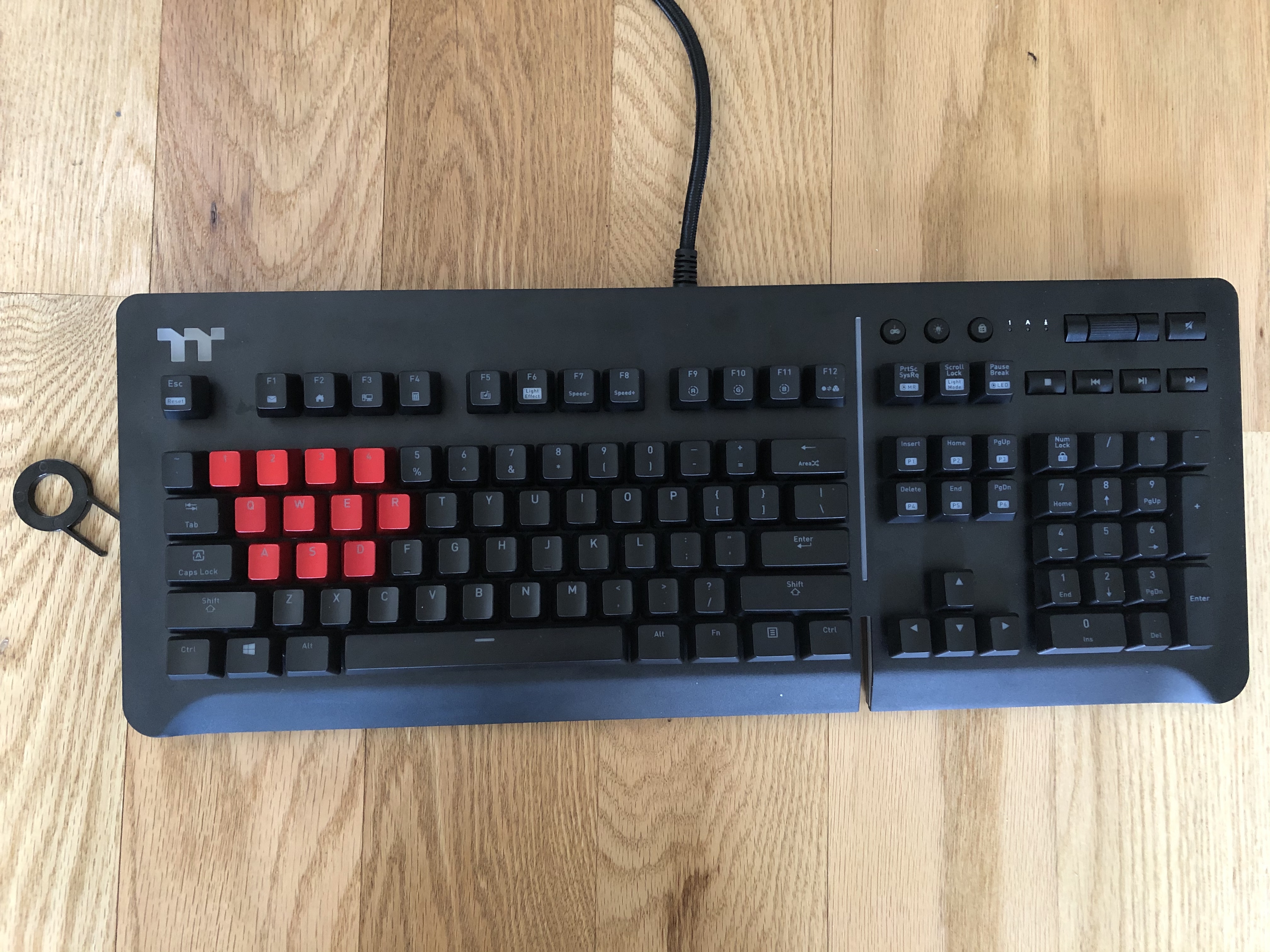
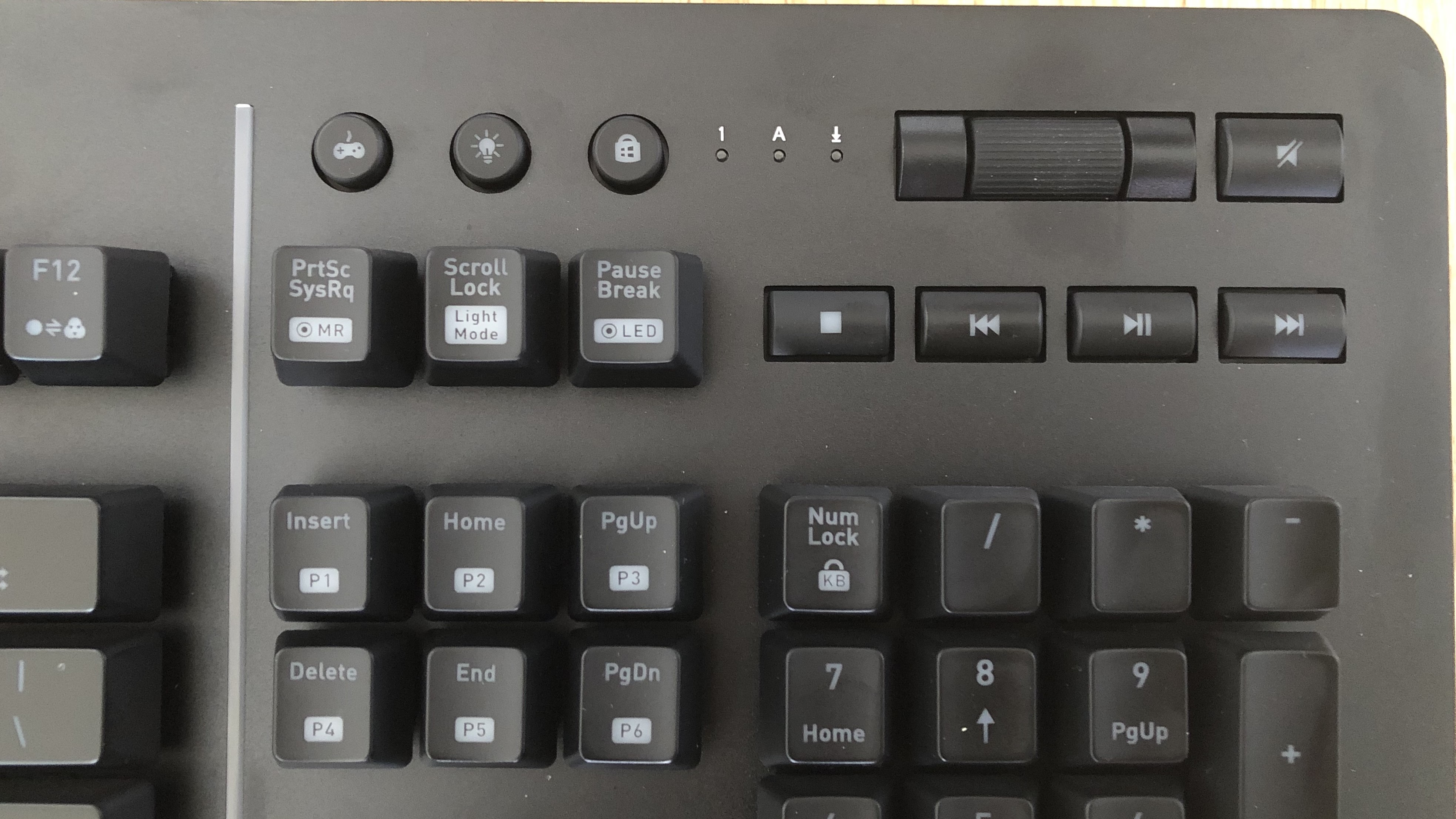
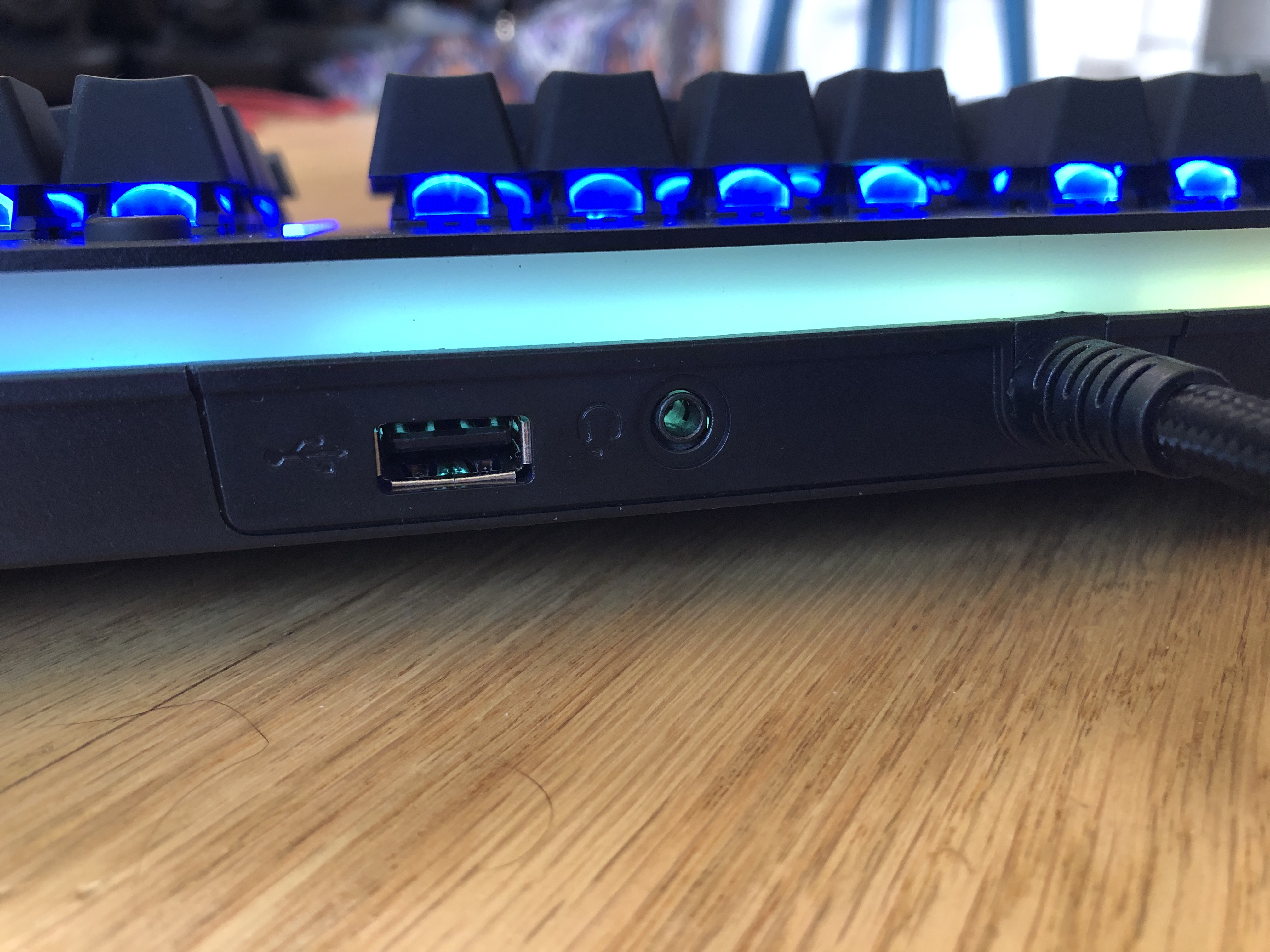
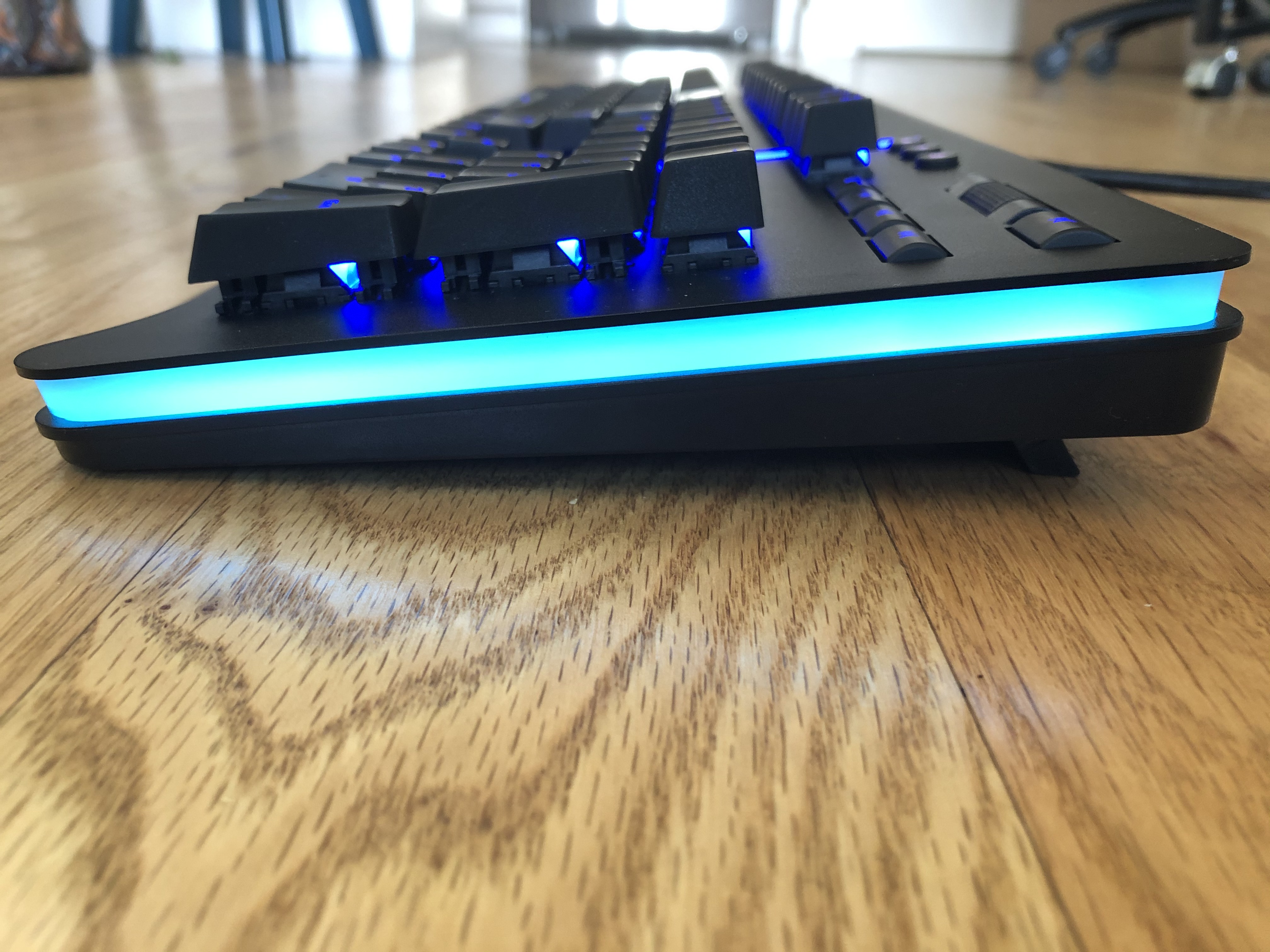
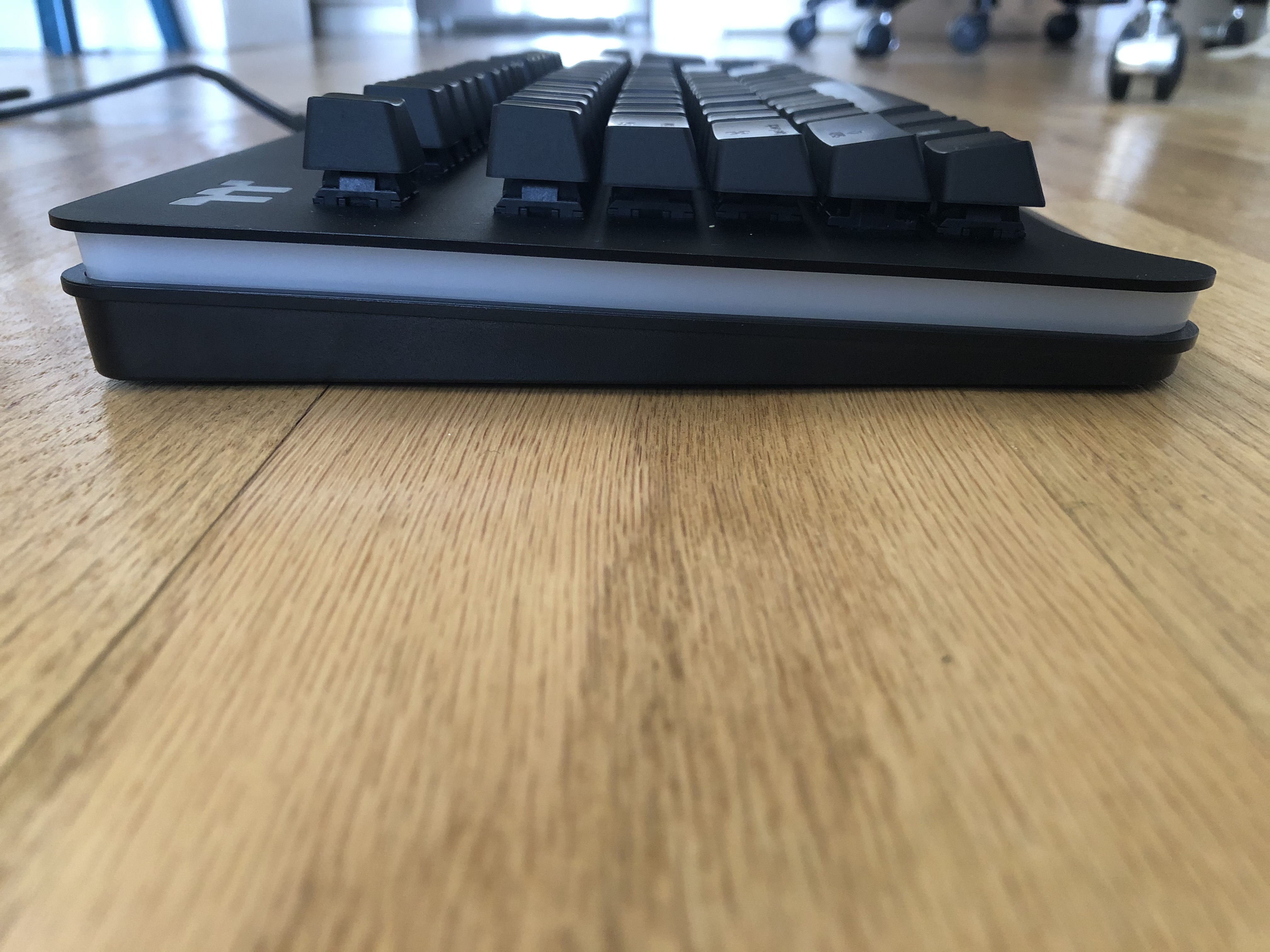
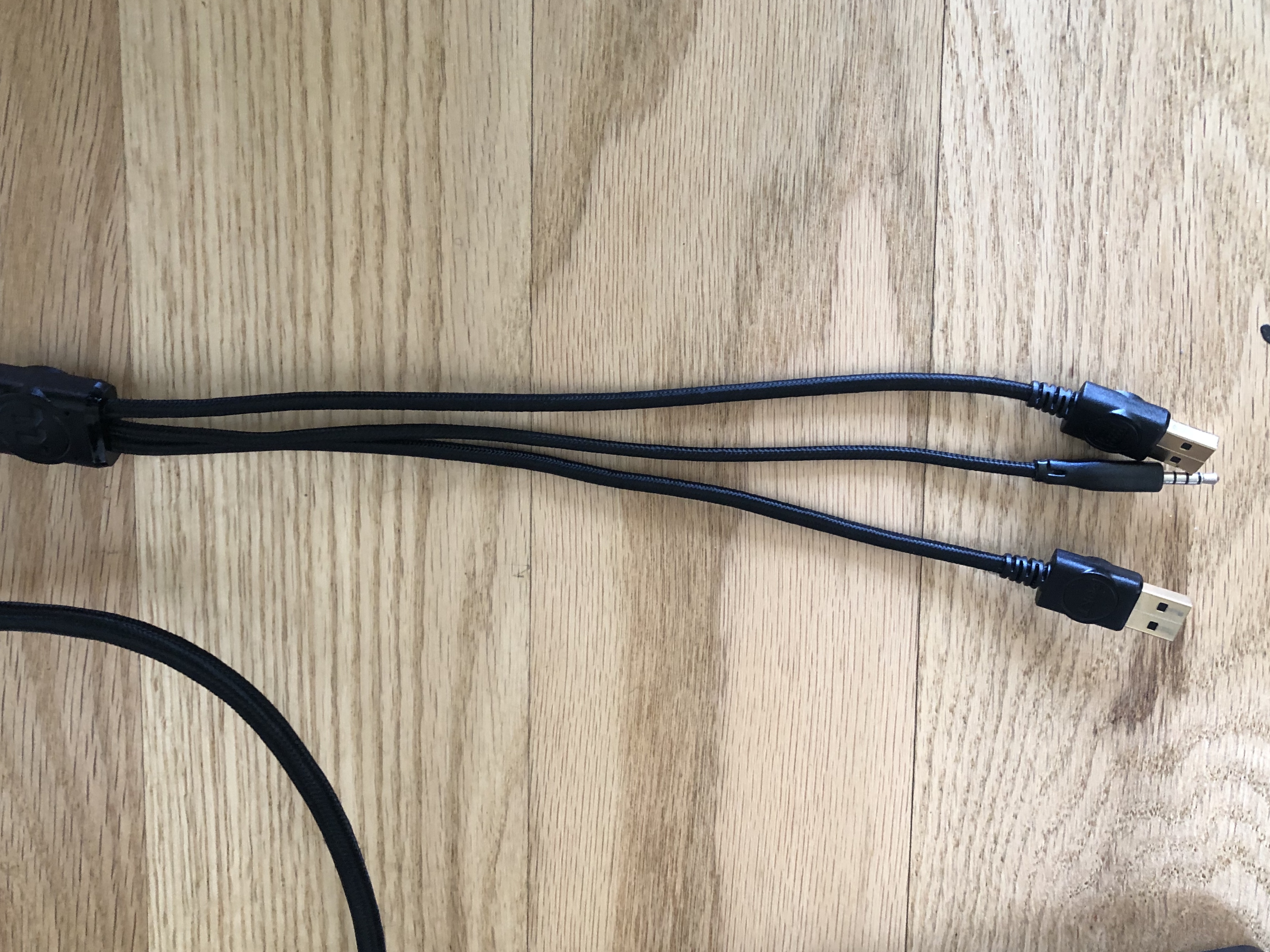
The Level 20 almost looks like the classic IBM Model M keyboard’s wild cousin. Like the cult classic, Thermaltake’s keyboard is chunky with a vast amount of empty space above the FN row and a meticulously stamped logo. But unlike the Model M, which was obviously fit for the office with its muted color scheme, the Level 20 is loud, with more RGB than even a typical gaming keyboard.
To start, there’s a streak of LEDs running down the board, creating a glowstick-like barrier between the main keys and the nav and num keys. The bar consists of 5 individually controlled RGB zones, allowing for a multi-color effect. But at maximum brightness, all that flash can be distracting as it shines in your peripheral vision. South of the RGB bar is a stark cutout in the Level 20’s frame, which holds another RGB zone that’s a discrete treat for your eyes.
Contrastingly, I could almost never see the bottom RGB deck from my typical sitting position. The lights run through three sides of the keyboard but, ironically, barely go into the side of the board that faces you. Sometimes I could see a peek of RGB in the corners, and if you’re gaming in the dark, the side lights will create a rave-ready glow on your desk. But otherwise the RGB here is virtually useless, which is saying something for RGB. I’d rather a hefty wrist rest to match the hefty keyboard than RGB zones that are respectively too distracting and too covert.
Another (small) complaint is the appearance of the RGB in the light bar, deck and Thermaltake logo. These LEDs are shining through white plastic, which diffuses the colors slightly. For example, red looked like light red, and green appeared more playful and teal. This could interfere with your style.
The Thermaltake Level 20 keyboard also makes its presence known through its size, measuring 19 x 7.3 x 1.7 inches and weighing 3.3 pounds. That’s heavier and more voluminous than your typical full-sized keyboard with media keys. For example, the Roccat Vulcan 122 Aimo is 18.2 x 9.3 x 1.3 inches and 2.5 pounds, and even the Corsair K95 RGB Platinum XT (18.3 x 6.7 x 1.4 inches, 2.9 pounds) will take up less space, despite it having a dedicated column of programmable “G” keys. The Level 20 has feet with two levels of adjustments on its textured plastic base and rubber nubs, but you needn’t worry about this juggernaut of a keyboard sliding.
You get all the media keys you need, including a rubbery and subtly clicky volume wheel and stiff buttons. But the Level 20’s bulk also comes from the aluminum top plate, which is 2mm thick and feels cool to the touch. Unlike the aluminum top plate on the Vulcan 122 Aimo, there’s no brushed finish on the Level 20, so it might not immediately look expensive. Instead, its dark, matte finish is a nice compliment to aggressive RGB engulfing the keyboard. For even more pizzazz, you can swap out 11 keycaps on the left side for the red, shimmery keycaps included in the box. Light bleeds through the red caps more, though.
The key layout offers many FN features, including the ability to tweak RGB’s effects, color and speed without launching software (or calling Alexa). You can easily launch up to 6 profiles with the help of the FN key and do macro recording, although there are no dedicated macro keys.
There’s a rare amount of USB passthrough with the Thermaltake Level 20 keyboard. Not only does it have a USB Type-A passthrough port, there’s also a 3.5mm headphone jack on the front edge of the keyboard. If you need your best gaming headset but your PC’s jack is hard to reach, this is great. The tradeoff is a hefty braided cable with a bulky three-way connector. If you want to use the keyboard and both of its passthrough ports simultaneously you’ll need a PC that has two Type-A ports and a headphone jack in decent proximity to each other (i.e. not on opposite sides of a laptop).
Alexa, Change My RGB
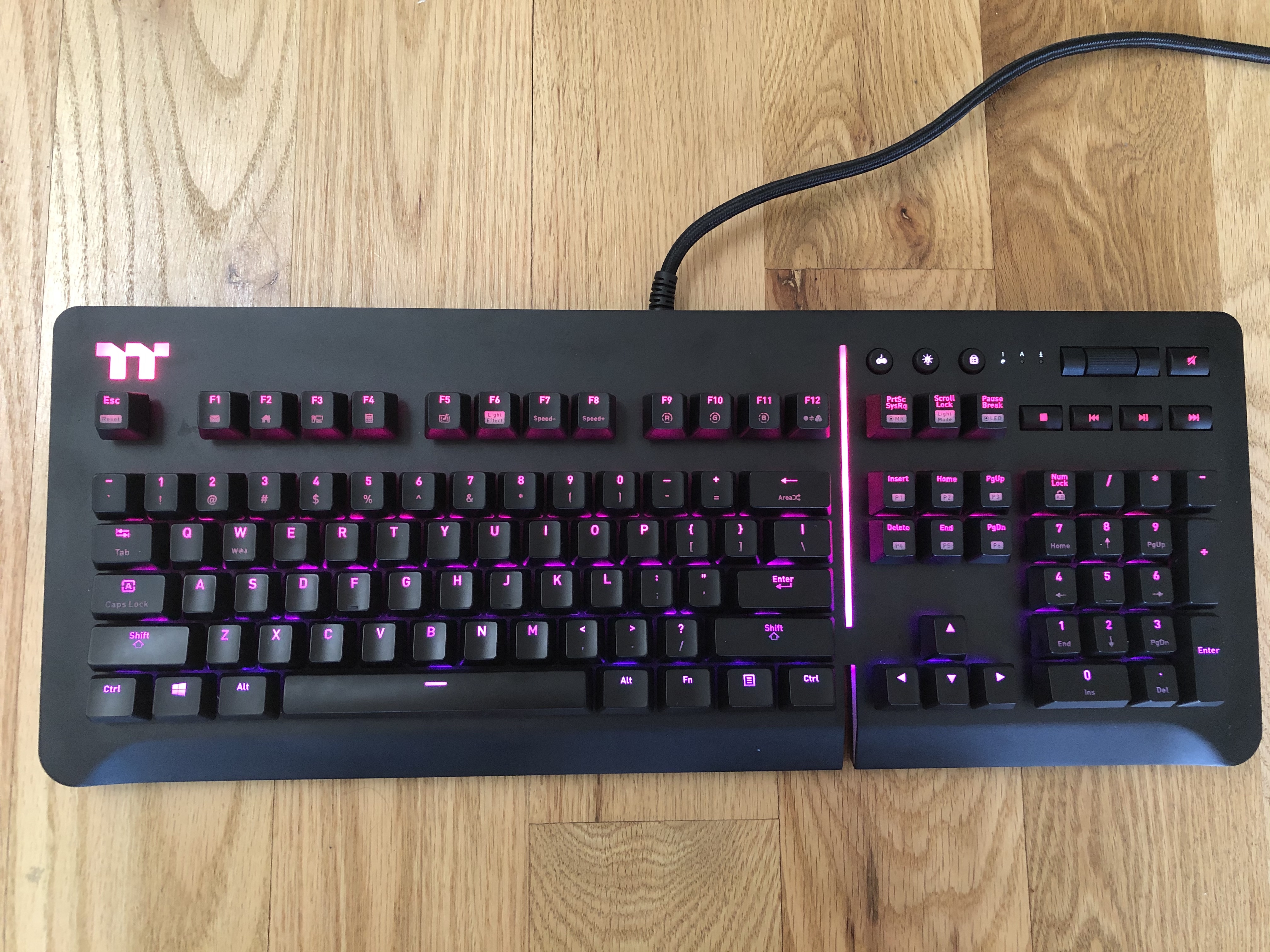
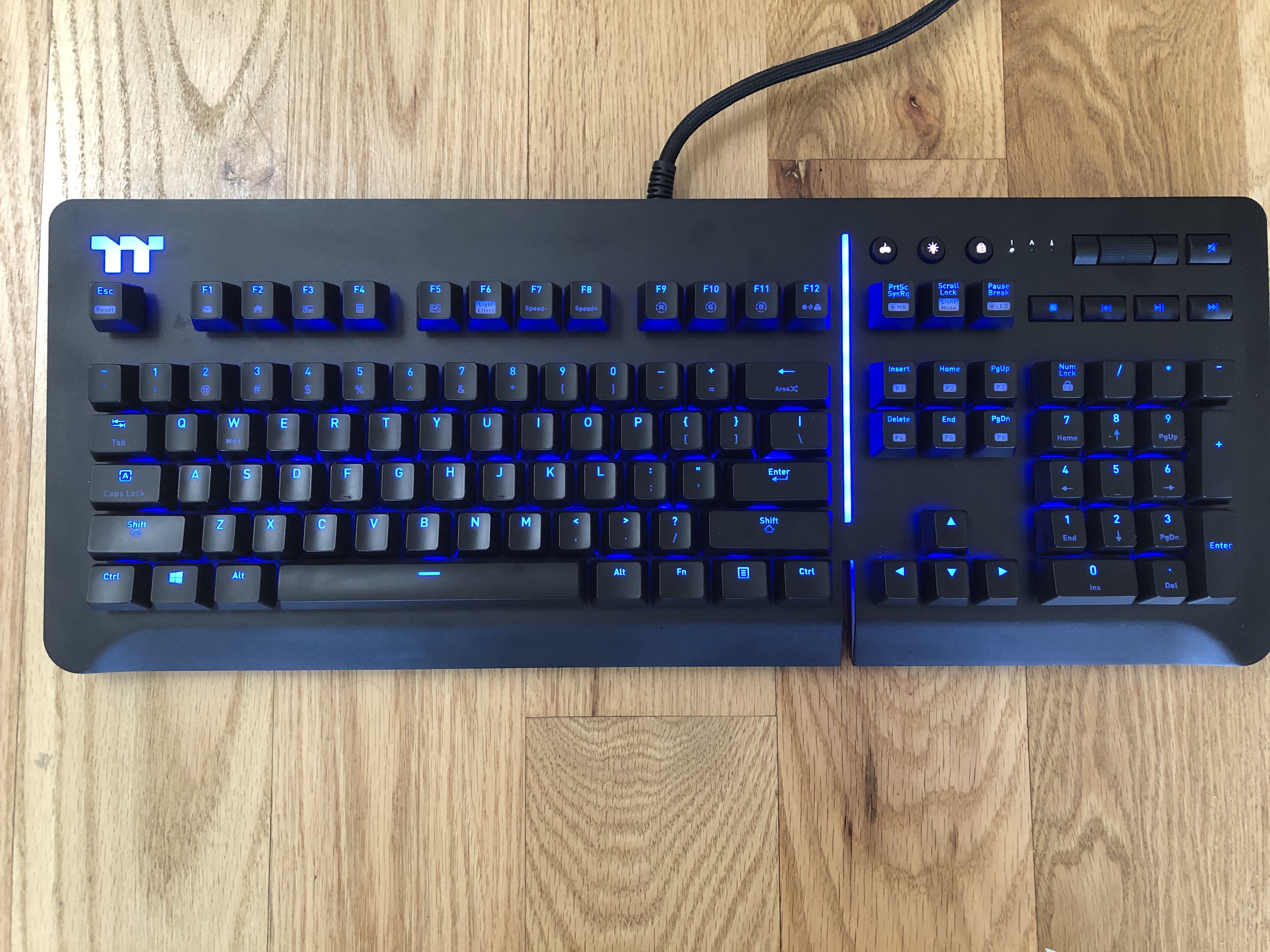
Alexa, why are you here? I admit that I never got aboard the voice assistant train. I don’t like the idea of placing internet-connected microphones around my home, and I’d much rather push buttons to control tech than speak commands (hello, I write keyboard reviews). But in a world of unreliable peripheral software and excessive RGB zones, some might appreciate the ease of changing their keyboard’s lighting by speaking to their Amazon Echo.
Bringing Alexa control to the Level 20 seems easy enough. You enable “Alexa Skills TT RGB Plus” in your Amazon account, then log into Thermaltake’s iTake software. Afterwards, you can say “Alexa, tell Thermaltake” and then one of the supported phrases (see this PDF) to alter RGB colors, effects and speeds. You can do this through software and function controls too, but this gives you a way to bark commands at your keyboard. I don’t have any Alexa-powered devices in my house, and our New York lab is still locked down, so unfortunately I wasn’t able to see how well the Level 20 responds to Alexa commands.
This feature may be more appealing if you own more products from Thermaltake’s TT RGB Plus line, which are all controllable via Alexa. With this feature available in water coolers, power supplies, RAM and more, you should be able to change the lighting throughout your system with a single voice command.
Typing Experience on Thermaltake Level 20 Keyboard
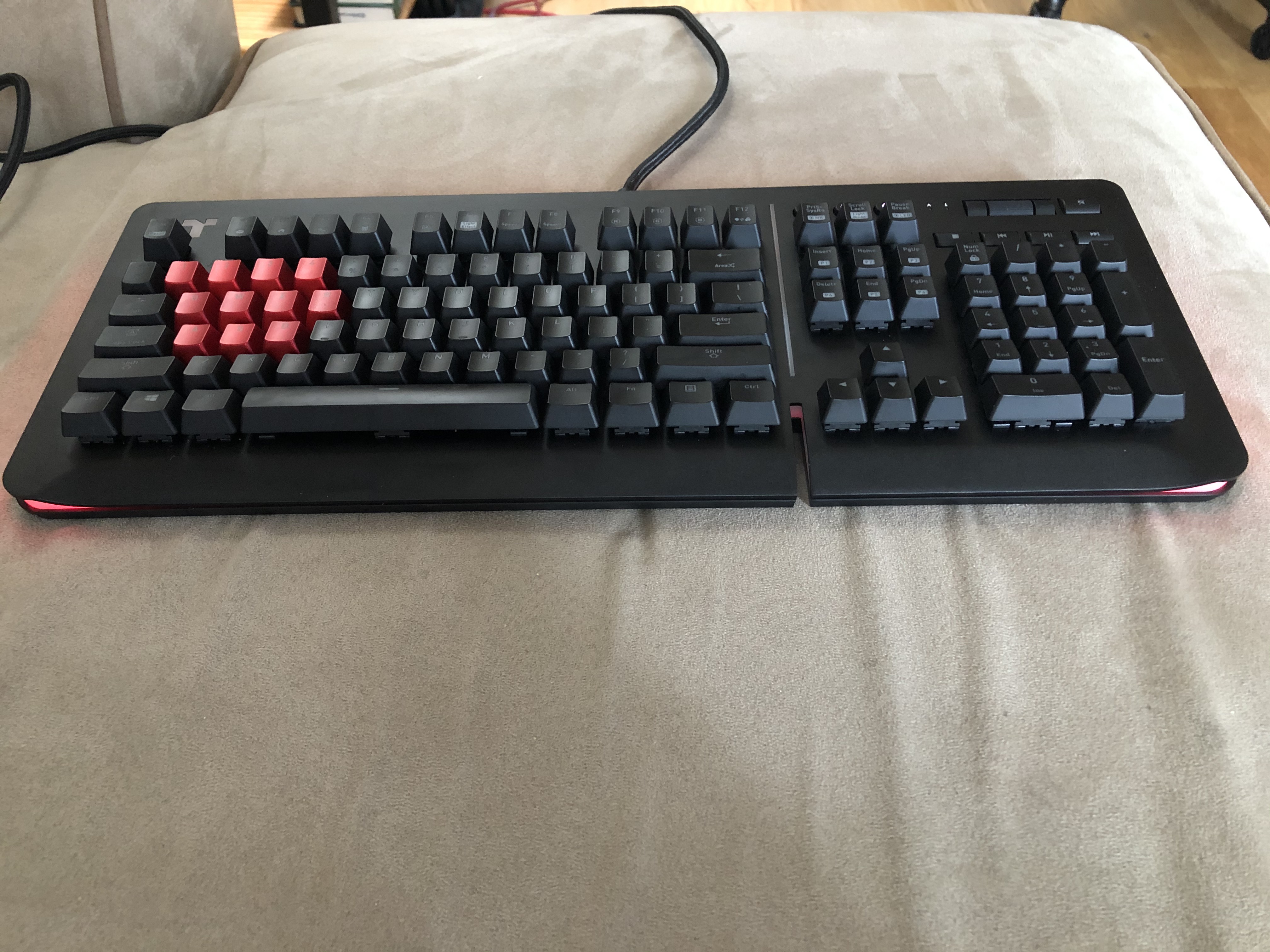
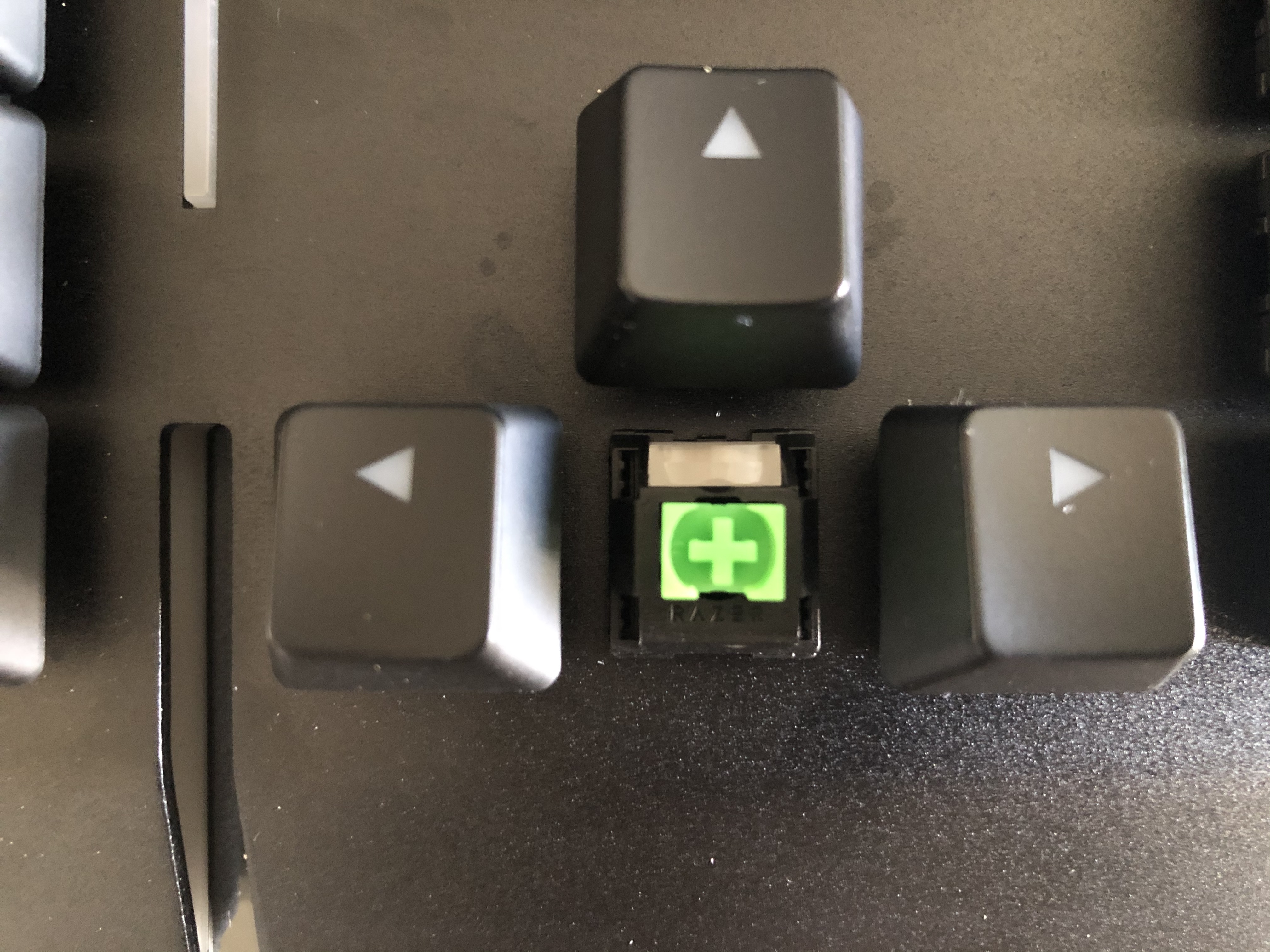
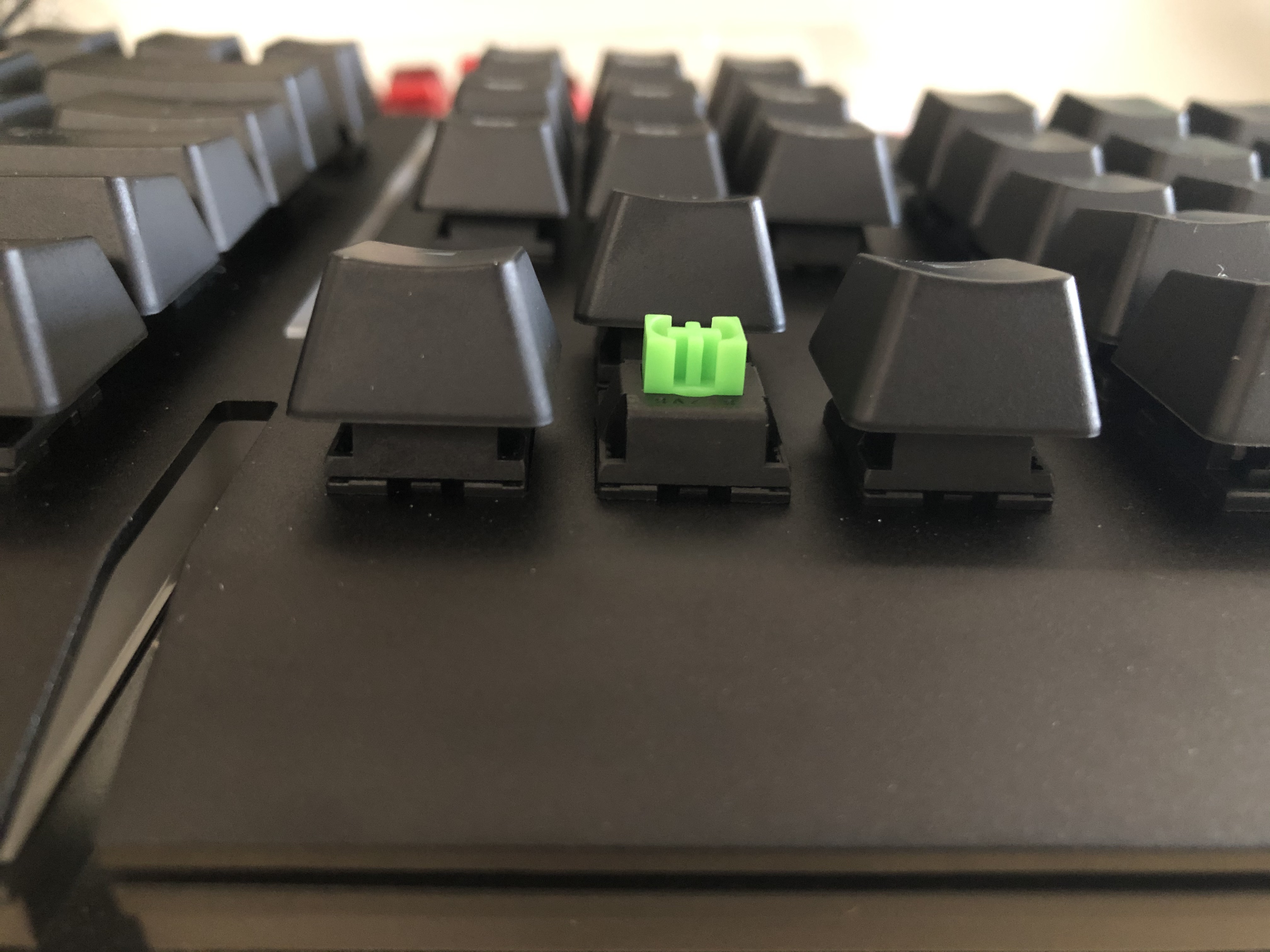
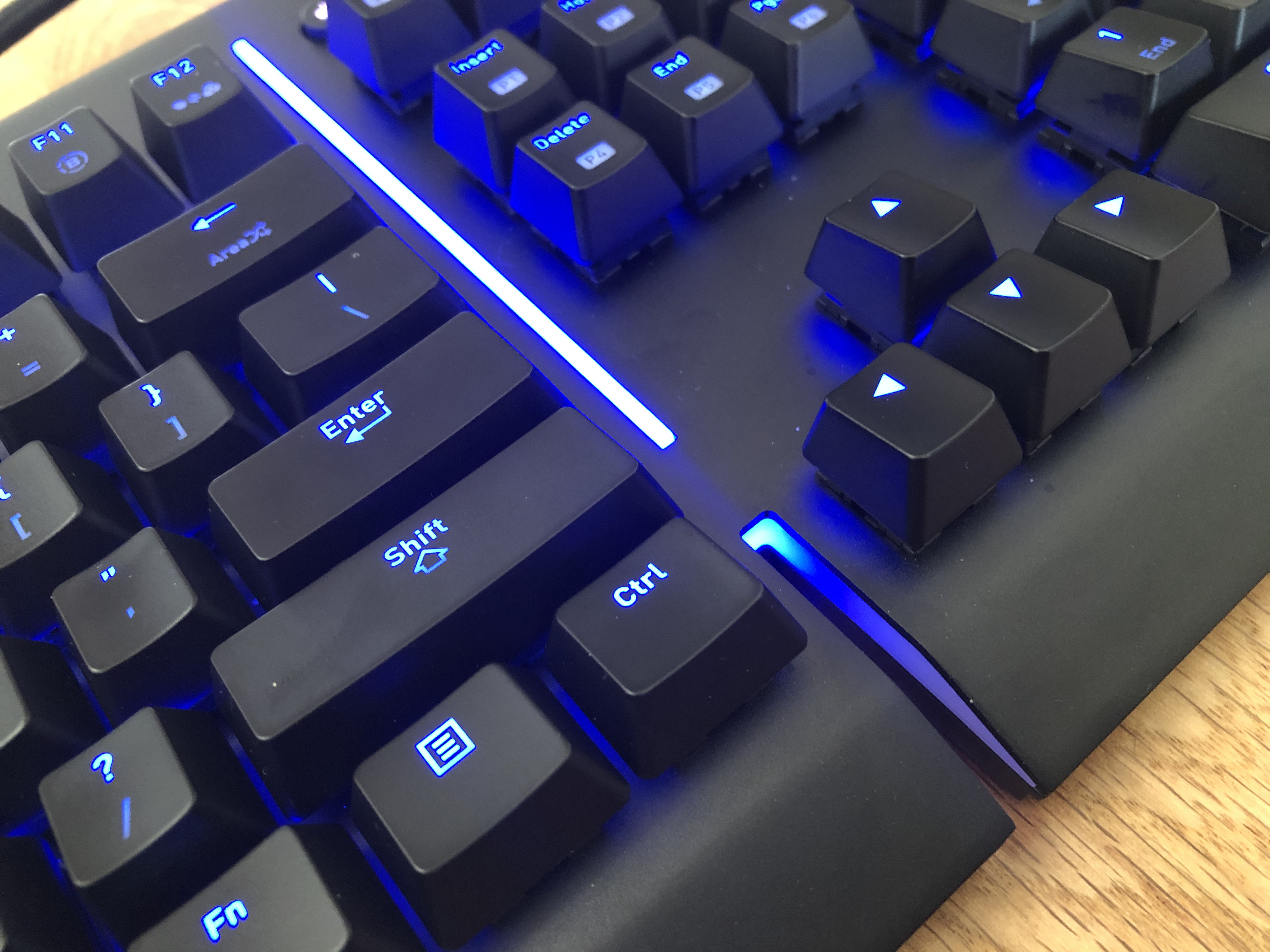
Our review sample of the Thermaltake Level 20 came with Razer Green mechanical switches, but the keyboard’s also available with Cherry MX Blue or Cherry MX Speed switches.
The Razer Green switch makes a clicky noise and has a tactile bump that you can feel as you travel down its 4.0mm total travel. It actuates at 1.9mm with 50 grams of force. Despite its name and color, the Razer Green is most similar to the Cherry MX Blue, which has the same amount of total travel but actuates at a further 2.2mm and with a much heavier 61 grams of force. The result was that they felt a little lighter on my fingers compared to Cherry MX Blues, and in a side-by-side comparison the Razer Green switches’ bump felt less prominent.
The keycaps on the keyboard are your typical plastic, smooth without much in the way of texture besides the feeling of the font. Fans of Razer Green, Cherry MX Blue and other clicky mechanical switch types flourish in a chorus of clicks. But on the Level 20, the clicks are more like background singers for the louder and very slightly elevated keycaps. The keycaps make a hollow noise against the aluminum top plate, especially with the backspace button and space bar or when typing aggressively. The spacebar is also a bit shakier than I’d like, and the backspace key comes close to meeting that description too. Your experience may vary, particularly if you type very lightly.
On the 10fastfingers.com test, I averaged 123 words per minute (wpm) with a 97.5% error rate. That’s speedier than my typical 110 wpm with a negligible dip in accuracy (I’m usually at 98%). The speed gain is likely due to the Razer Green switches requiring a lighter amount of force to actuate than Cherry MX Blues.
Gaming Experience on Thermaltake Level 20 Keyboard
Your experience gaming with the Thermaltake Level 20 will depend on your switch choice. With our Razer Green switch-powered review unit, I certainly wasn’t fit for streaming or chatting unless I wanted to hear complaints about my loud clicks and keycaps.
Otherwise, the Razer Green requires slightly less travel to actuate (1.9mm versus 2.2mm) compared to the similar Cherry MX Blue switches. More noticeable to me, however, is how light the switches felt compared to MX Blues, which helped me bounce from key to key when gaming.
In Battlefield V, the Level 20 kept up with my soldier well, offering reliable input and the ability to quickly move on to the next action. However, the wobbliness of the shift key sometimes distracted me when I was holding it down to run. When I used the Level 20 with Overwatch, I experienced the same lighter sensation, and the keycaps were less of a distraction as I pressed different keys rapidly. However, those seeking a faster and more linear feel (where the keys go straight down without any bump along the way) should consider getting the Level 20 with Cherry MX Speed Silver switches, although that currently costs $20 more than our review unit.
The Level 20 is supposed to have 100% anti-ghosting with full n-key rollover. It’s hard to press every key at once, but I did an informal test with an online tool and recorded 48 simultaneous inputs.
Gamers will also appreciate on-the-fly macro recording, 6 onboard profiles and the thoughtful ability to switch the W,A, S, D for arrow keys, which is handy for the lefties. Another nice touch: FN and Scroll Lock activate Light Mode, which turnS on RGB for controls often used in games through 5 different configurations.
Features and Software on Thermaltake Level 20 Keyboard
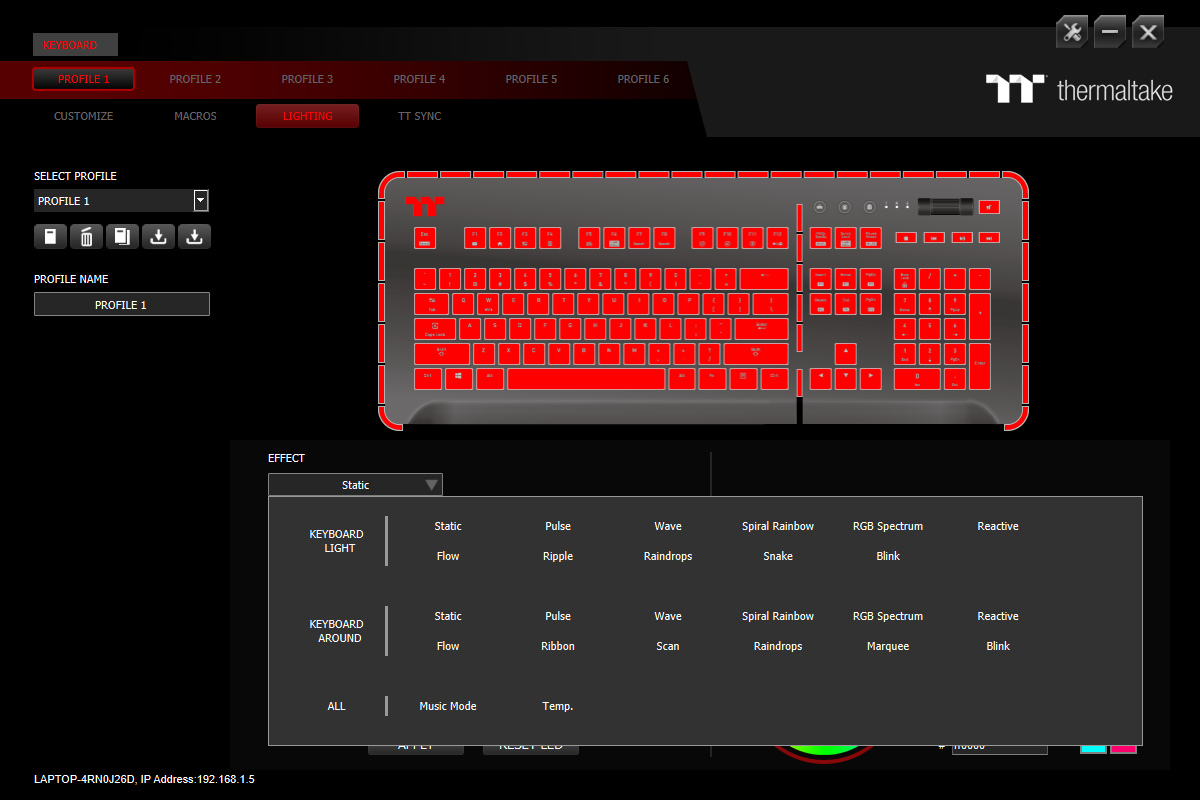
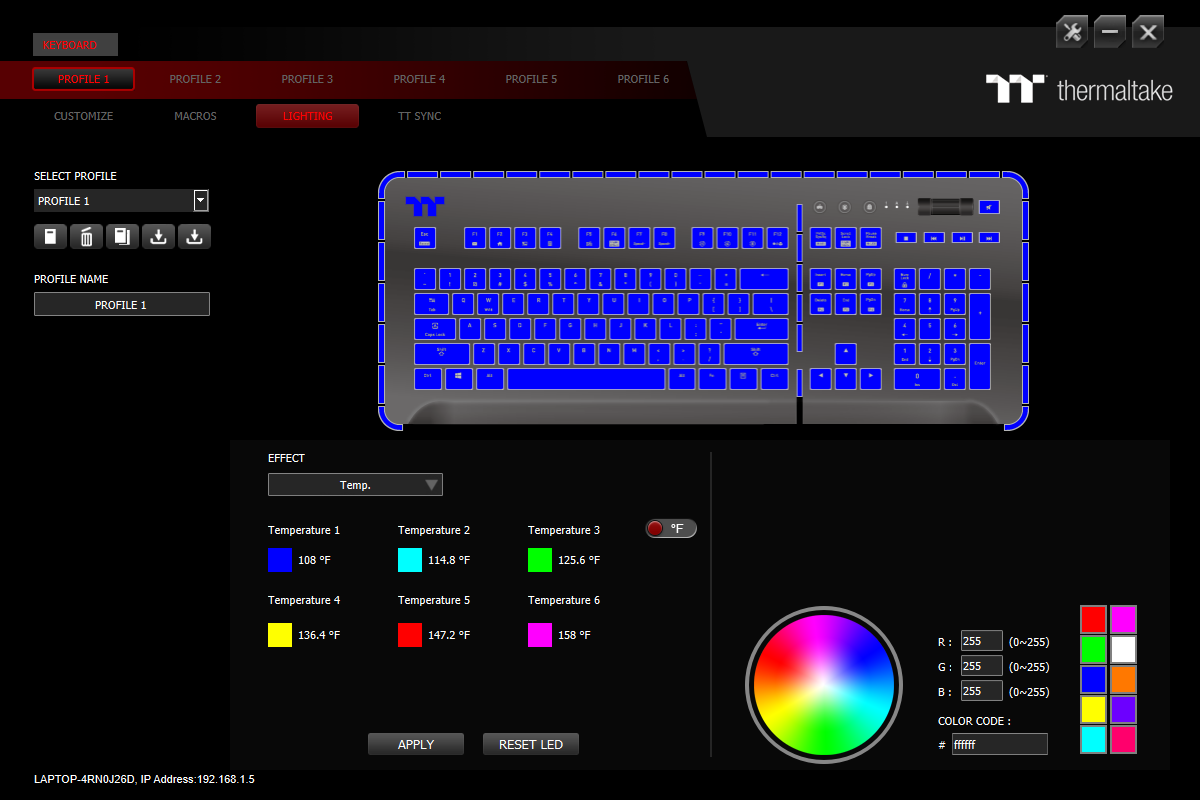
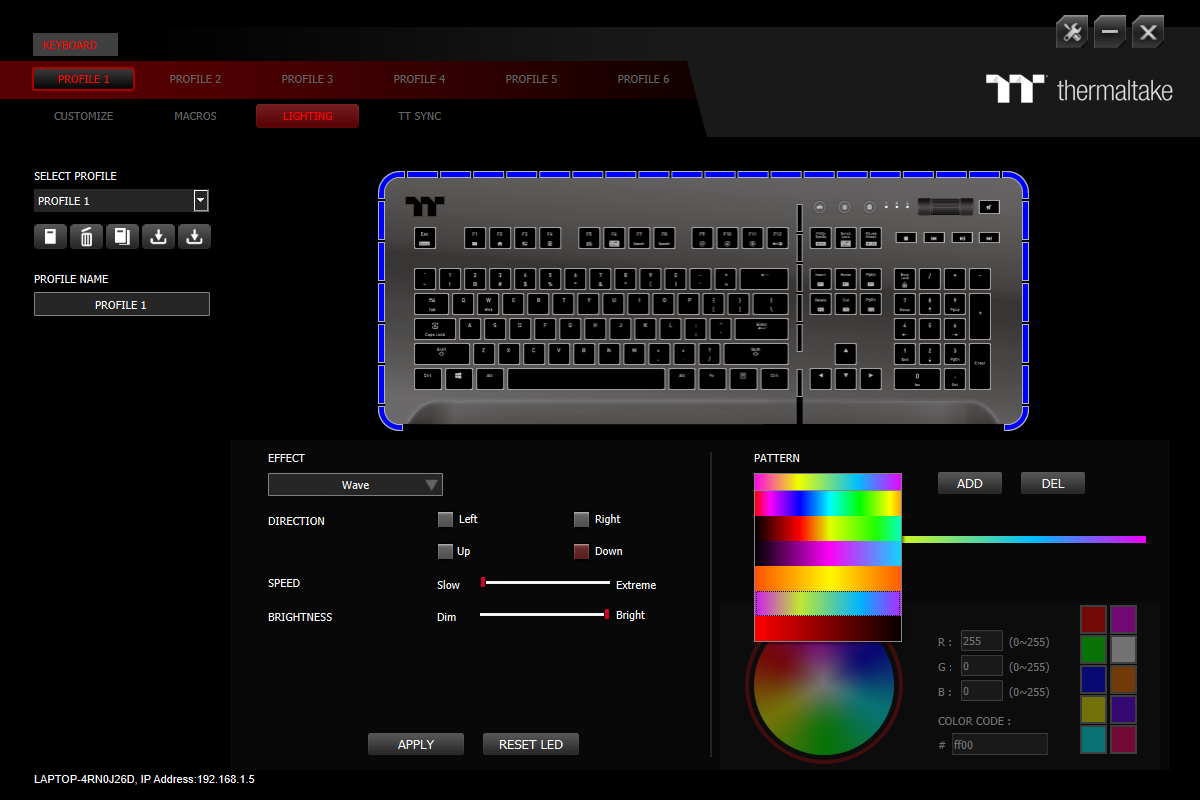
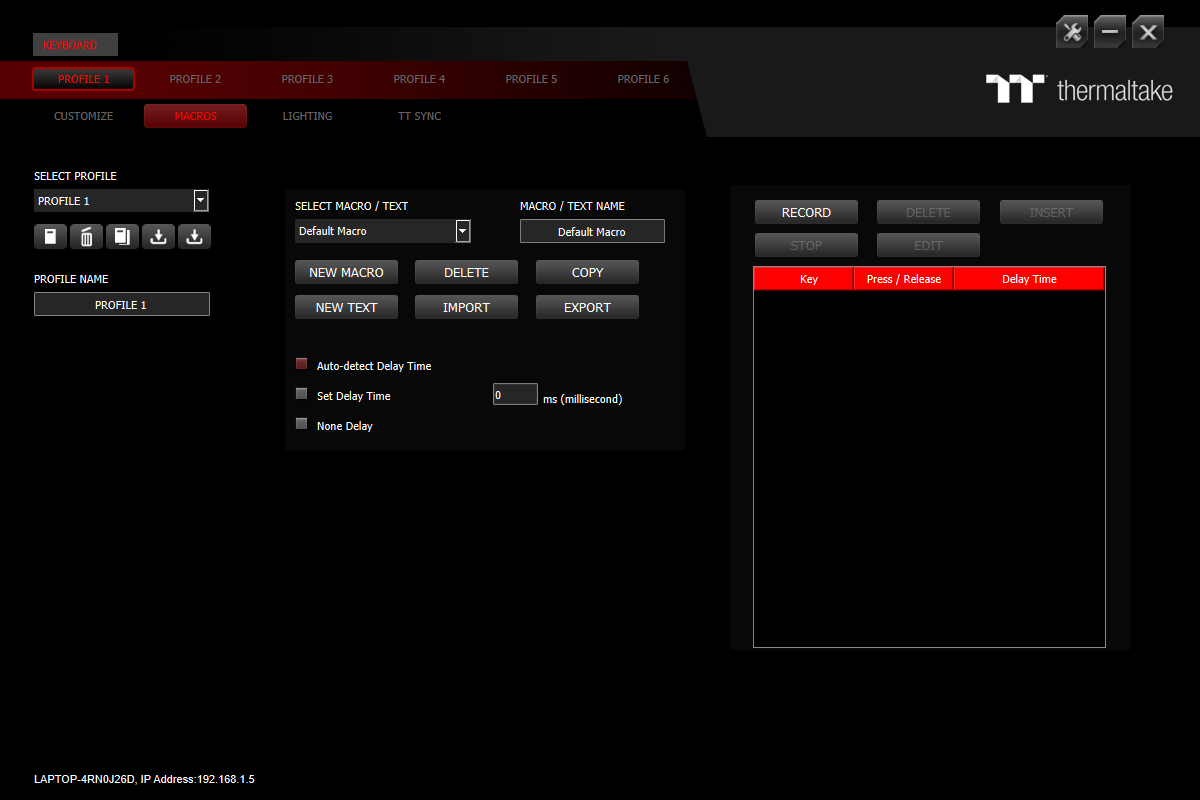
Amazon Alexa lets you control the Level 20’s RGB, but for much more customization you’ll need TT iTake software. It gives you the expected functionality, like lighting control and macro programming.
Annoyingly, TT iTake is wonky and often crashed multiple times before I finished my adjustments. Once it crashed, I usually had to restart my computer to get it to properly launch again. Opening the software (or having it automatically launch at start) seems to deactivate the ability to control RGB on the keyboard, making customization frustrating.
Because it has 4MB of onboard memory, you can create up to 6 different profiles that are launchable via 6 navigation keys and also importable.
If you can get through the app’s frequent crashing, you can use iTake to program every key, (except the media ones) to a macro function, media key, function key or launch software. There are also pre-made gaming profiles with commonly used functions suggested for 10 games, including CS:GO, League of Legends and Overwatch.
There’s pey-key lighting, but Thermaltake starts you off with 11 RGB effects for the keyboard, and 12 for the RGB deck. There are two effects that take over both the keys and the deck. Music Mode reacts to music, and Temp Mode uses color coding to tell you your system’s temperature (one of six measurements) in Fahrenheit or Celsius.
The Level 20 also also works with Razer Synapse, which is a more reliable program and lets you sync the keyboard’s lighting with other RGB products that support Razer Chroma.
Thermaltake Level 20 Keyboard Versions
If you like the Thermaltake Level 20 keyboard but don’t love it’s look, note that there are other versions available.
For about $140, there’s a version of this keyboard with a gray-colored top plate that makes it more apparent that it’s aluminum. You can find it with Cherry MX Blue or Cherry MX Speed Silver. Sorry, no Razer Greens here.
If you don’t need Alexa control or the RGB lightbar and sidelights, the Thermaltake Level 20 GT comes with Cherry MX Blue, Cherry MX Speed Silver or Razer Green switches, but as of writing we’re only seeing it readily available with Razer Green switches ($120).
Bottom Line
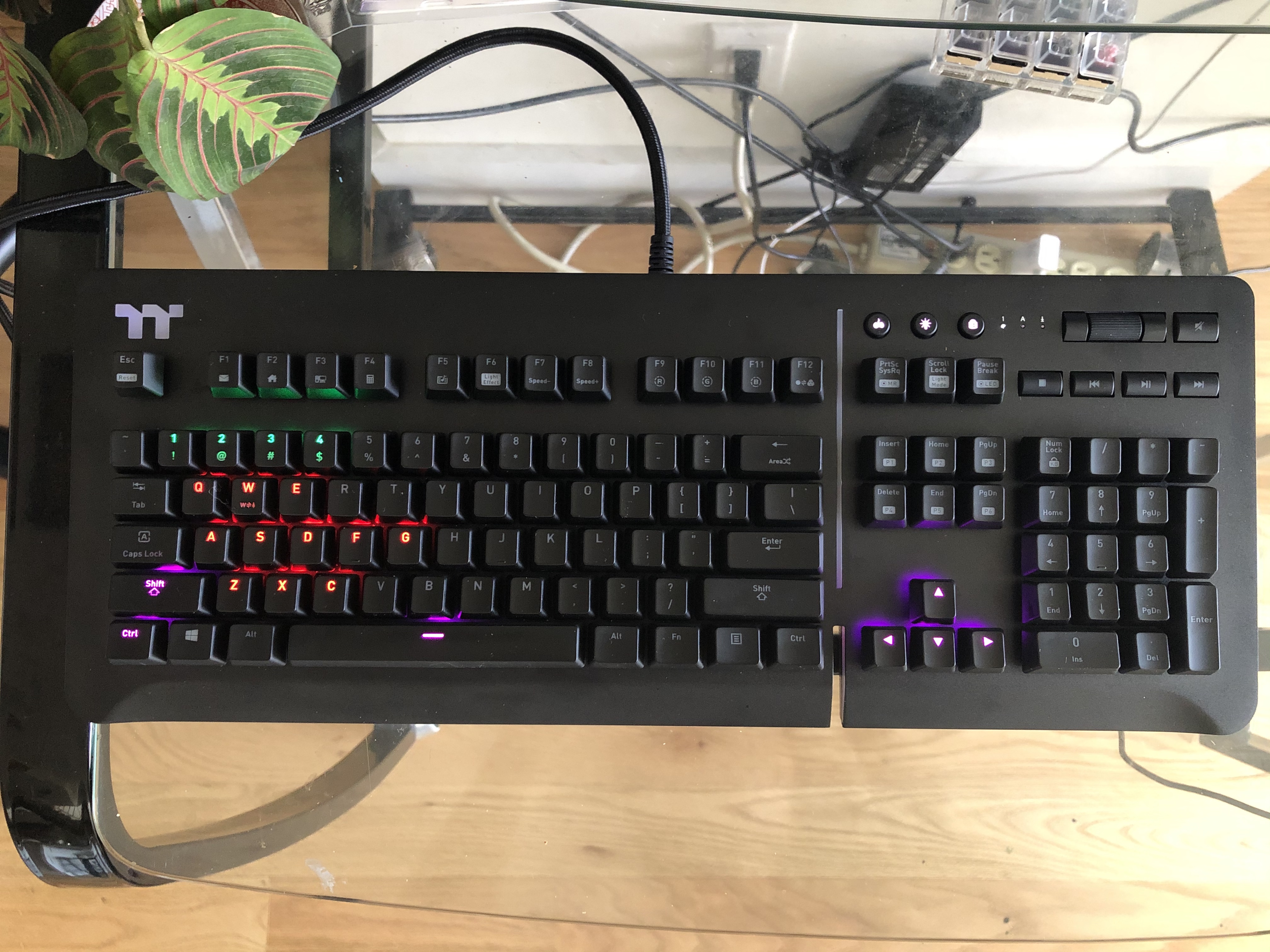
The Thermaltake Level 20 has features no one really needs from their keyboard. We’re looking at you, Alexa. The RGB side lights and bars are a unique touch, but one of them you’ll hardly ever see and the other can be distracting when gaming or working.
With options for linear or clicky Razer or Cherry switches, you can find your preferred feel for gaming, and the Level 20 is clearly made for gamers, with features like macro recording and onboard profiles.
If you’re overwhelmed by the RGB, consider the Thermaltake Level 20 GT, which is slightly cheaper, but as of writing we’re only seeing it with the Cherry MX Silver Speed switches. Another option is the Patriot Viper V765, which also has side RGB lights and is cheaper at $100.
But if you’re looking for a fearless design and perhaps live in an Alexa-friendly home, the Level 20 is ready to listen to your voice commands as you battle and/or type.
Scharon Harding has a special affinity for gaming peripherals (especially monitors), laptops and virtual reality. Previously, she covered business technology, including hardware, software, cyber security, cloud and other IT happenings, at Channelnomics, with bylines at CRN UK.
